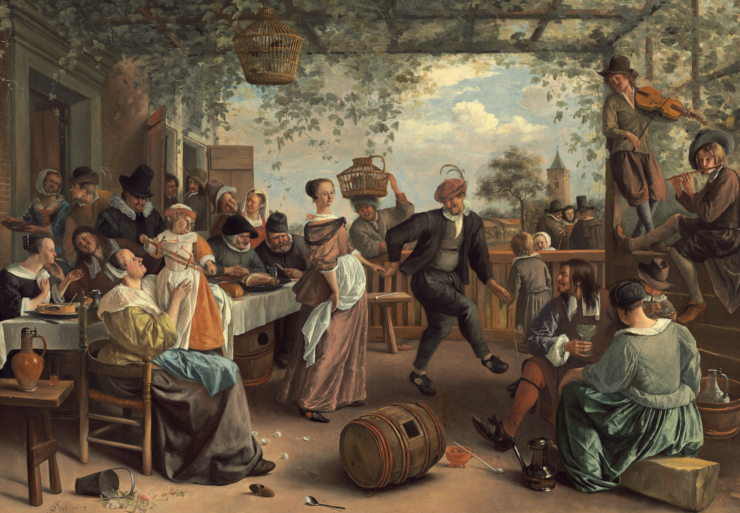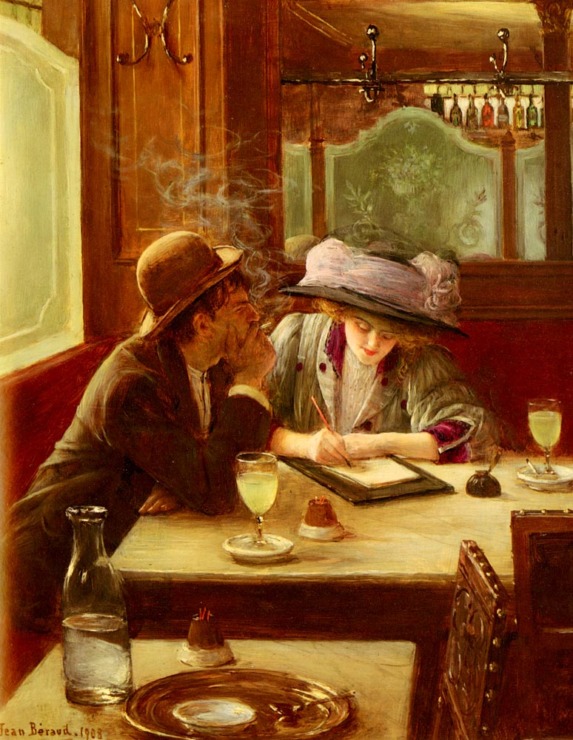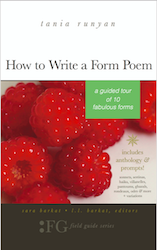A Party Of Lovers
Pensive they sit, and roll their languid eyes,
Nibble their toast, and cool their tea with sighs,
Or else forget the purpose of the night,
Forget their tea — forget their appetite.
See with cross’d arms they sit — ah! happy crew,
The fire is going out and no one rings
For coals, and therefore no coals Betty brings.
A fly is in the milk-pot — must he die
By a humane society?
No, no; there Mr. Werter takes his spoon,
Inserts it, dips the handle, and lo! soon
The little straggler, sav’d from perils dark,
Across the teaboard draws a long wet mark.
Arise! take snuffers by the handle,
There’s a large cauliflower in each candle.
A winding-sheet, ah me! I must away
To No. 7, just beyond the circus gay.
‘Alas, my friend! your coat sits very well;
Where may your tailor live?’ ‘I may not tell.
O pardon me — I’m absent now and then.
Where might my tailor live? I say again
I cannot tell, let me no more be teaz’d —
He lives in Wapping, might live where he pleas’d.’
-John Keats
Enjoy Artistic Representations of “A Party of Lovers” by John Keats

The Dancing Couple by Jan Steen, 1663

La Lettre by Jean Béraud, 1908.
Listen to Readings of “A Party of Lovers”
Listen to this Musical Interpretation of “A Party of Lovers” by John Keats
John Keats Biography
Keats was born in London on Oct. 31, 1795; a few weeks later he was baptized at St. Botolph Without Bishopsgate Church, near where his parents lived and father worked as the manager of a stable owned by his father-in-law. Keats was the eldest of four children, with George, Tom, and Fanny following him. The family was well off enough that the boys were sent to Clark’s Academy in Edmonton at what is now the north London borough of Enfield for their education; it was riding his horse home from a visit to the school that Keats’ father fell and died the next day. His mother remarried (rather quickly, in fact), fought with the rest of the family, and died fairly young from consumption or tuberculosis, which was all too common at the time and would eventually claim the life of Keats’ youngest brother, Tom, as well as Keats himself.
He was apprenticed to a local doctor, but the relationship didn’t seem to work too well. He ended up working at St. Guy’s Hospital in the Southwark district of London, continuing his medical training and writing poetry (the site of the original St. Guy’s in now occupied by London’s tallest office building, known locally as “The Shard”).
While Keats had numerous city connections (Anita Miller also has a “Keats in the City” walk), it is with Hampstead that he is most closely associated. Fellow poets lived there, as did the editor who first published his poetry. Artists whom Keats associated with lived there. Keats himself would move there with his brothers. Keats and his friends would wander Hampstead Heath, talking and arguing poetry and the issues of the day. After moving into Wentworth House in Hampstead, Keats wrote five of six famous odes, including “Ode to a Nightingale.” And it would be at Wentworth House in Hampstead that Keats would realize that he was dying from the same disease that took his mother and younger brother.
Enjoyed A Party of Lovers by John Keats and want to know more about Keats’ life? Try A Month With Keats: A Walk Into His Life
That’s it for A Party of Lovers!
BUY ‘HOW TO WRITE A FORM POEM’ NOW!
